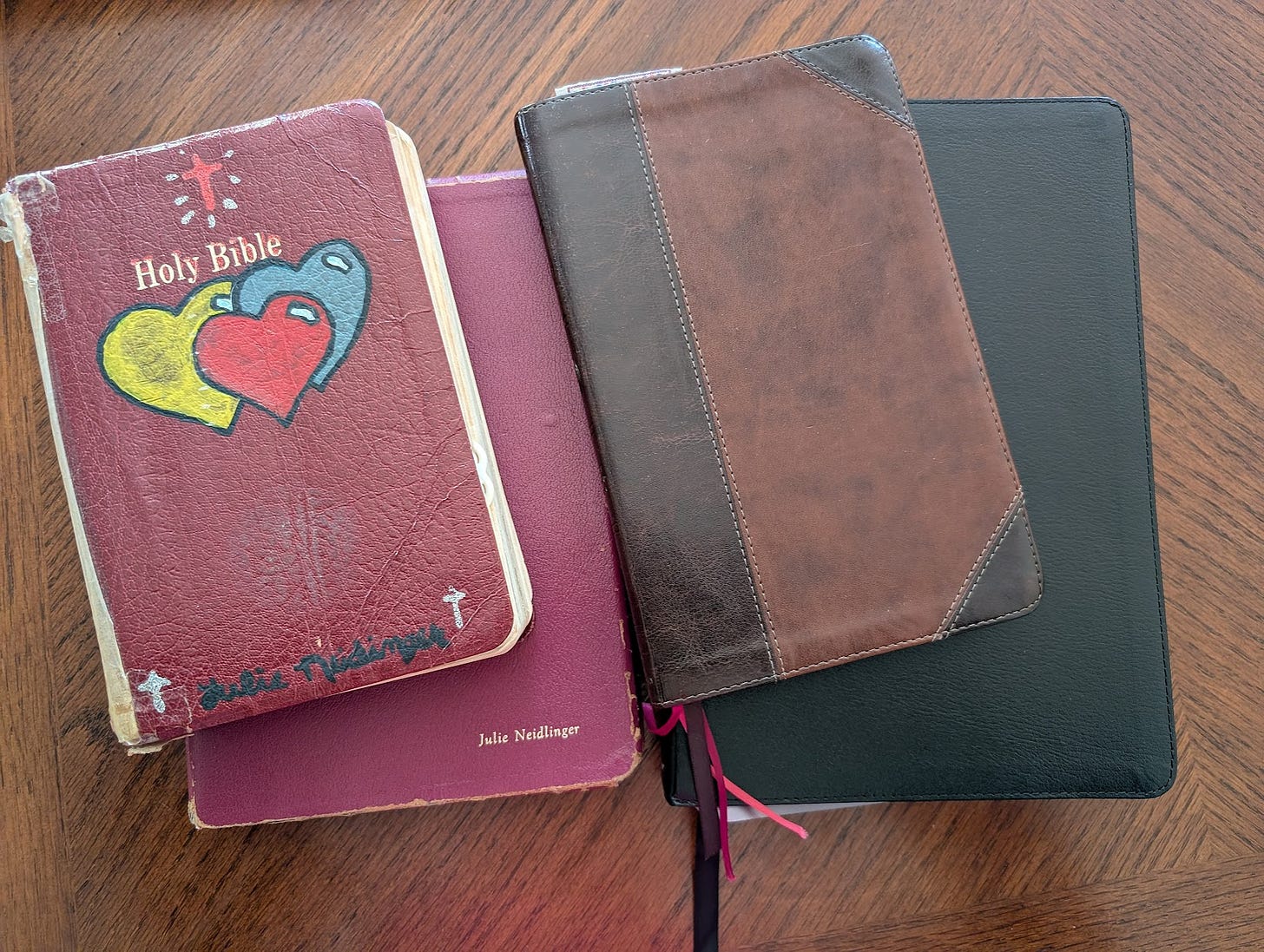When you can't read the fine print, and it happens to be in your Bible.
This is kind of traumatic.
You live in your Bible and it’s full of notes, bookmarks, highlights, moments of “a-ha!” in the margin—and to start over is super tough.
I can think of several good reasons to do it:
Your old Bible is so well used (like my mom’s) that it’s falling apart.
Yo…


